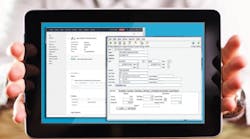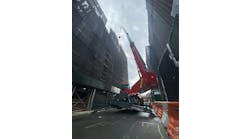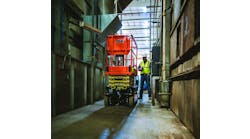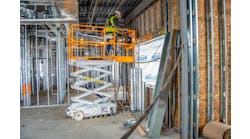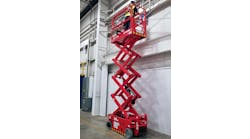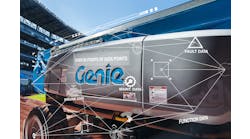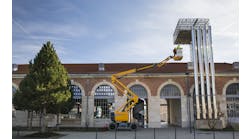Kara Lawrence, CMA, co-president/CEO of Alert Management Systems talks about integration between software and telematics, job costing, the growth on online rentals, and more.
What are the new developments in your rental software since we last had these interviews a year ago?
Lawrence: Alert releases a new revision of our EasyPro software every year; each update contains dozens of enhancements and new functionalities that are voted on annually by our User Group. E-Commerce has been our biggest project this year; Alert EasyPro can facilitate a rental from start to finish on the rental operator’s website. This is an exciting development in our industry!
We’ve recently released an integration to Rouse Analytics, as well as a two-way interface to Zoho’s CRM software, more telematics interfaces, job costing, and on-the-fly substitution of kit pieces on a kit.
As telematics grows in importance in the rental industry, the relationship between telematics and rental software is important. Can you talk about the integration between your software and telematics systems?
Lawrence: Alert EasyPro integrates with any number of telematics systems that use the AEMP standard, which is a standard format that was adopted by the equipment tracking software companies. Meter readings are automatically imported into Alert from the units on the equipment, making billing simpler than ever. GPS locations are also tracked and saved, which can prevent potential conflicts.
One of the challenges rental companies face is figuring out how the level of profitability of each piece of equipment, and each cat-class or equipment segment. How can your software help with that challenge?
Lawrence: Since Alert has been writing software exclusively for the rental industry for over 40 years, we know a thing or two about how to calculate profitability, and how rental operators want to see it. There are literally hundreds of reports that are included in the system, dozens of which relate to this issue. In fact, ROI can be measured at the unit, class, or category level with just a few keystrokes.
Another challenge for rental companies is the profitability of bidding on a job, and what type of rate makes sense for them in terms of the kind of ROIC they require. How can your software help rental companies to bid on particular jobs or determine the type of rate that makes sense?
Lawrence: By tracking equipment both time and dollar utilization as well as ROI, and by looking at job costing for similar jobs, a savvy rental operator is able to use data that Alert EasyPro already gathers to determine optimal pricing. Another technique is to look at quotes that were successful vs. quotes that weren’t successful to see if pricing is out of touch with the market. Intuitive reports that are already in the system make this type of analysis simple.
Further, our clients have requested a roundtable at this year’s users’ group meeting to discuss two new ways to scale pricing, based on both utilization projection and/or amount of time in advance of the rental for booking.
Increasingly rental customers want as much access as possible to manage their accounts online, have access to billing online, be able to order equipment and call it off-rent online and even be able to determine the availability of equipment from a rental company’s fleet. Are you finding this to be a growing trend and how are you improving in being able to facilitate these functions?
Lawrence: Yes! From placing dinner reservations to vacation rentals, the public is becoming more accustomed to on-demand reservations, bill pay, etc. Alert recognized that need years ago and has been enhancing the features of our Customer Portal, where rental customers can log on to their accounts, manage billing, take equipment off-rent, and even pay securely.
One of the other well-established features of Alert that has been popular is the WebRequest function, where clients can place their request for quotes that can be ported into Alert, so it is clear E-Commerce is truly the next step in online rental. Our E-Commerce solution allows clients to build an entire order, which includes availability, from start to finish without having to call the store. They can pay for the order at the time it’s placed and be prohibited from making changes within a certain date range of the order. With clever programming, limitations that are inherent to online rental are easily managed and mitigated.
Mobility has been a major topic in recent years, being able to do just about everything on a smartphone that can be done on a laptop or desktop. Any new developments in that area in the past year?
Lawrence: Alert has been developing mobility features for the past several revisions of our EasyPro software, and we keep focusing our development energies in this area. Along with our newest E-Commerce offering, we have continued to expand our Sign&Rent capabilities to allow more and more remote functionality for both clients and staff: secure payment from your client’s mobile device can (if it is allowed) add the deposit to the ticket and even convert it from a bid to a reservation without taking any of your staff’s time; collection and auto-attachment of signatures, photos, notes, and even count sheets to tickets; and much more.
Mobile Timecard allows authorized employees to punch in and out from a remote location. Seamless integration with the rest of the timecard system makes this function easy to deploy, and our users are saving administrative time using this feature.
While we are continuing to expand our Mobile Reports options (which gives staff outside the brick and mortar building access to real-time Alert data via a URL), we also continue to add to the numbers of reports that can be pushed to staff and clients on a scheduled basis.
